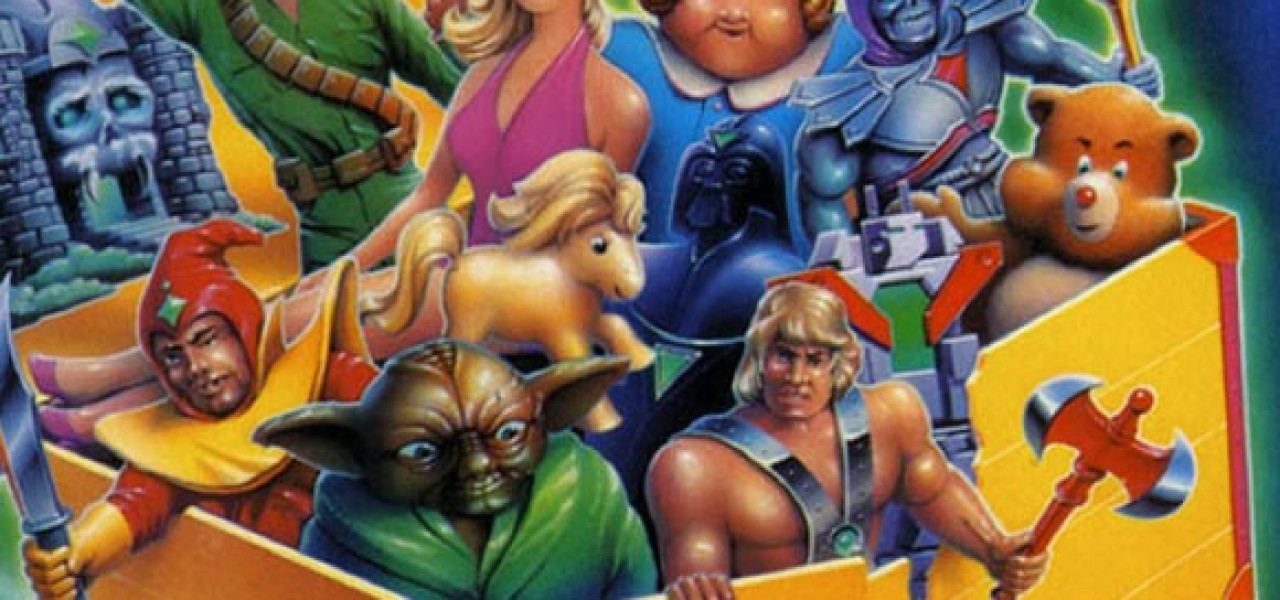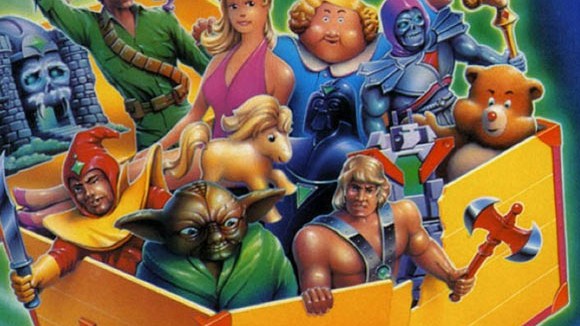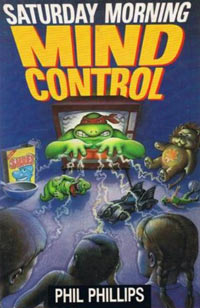

“Turmoil in the Toy Box” Revisited

In the seventies and eighties, musicians such as KISS and Alice Cooper were accused by concerned moralists of indoctrinating children with all manner of satanic debauchery. Author Phil Phillips took things a step further in 1986: to Phillips, you did not need to watch a Gene Simmons performance to find this diabolic agenda. You need only watch an episode of Care Bears.
Phillips’ book Turmoil in the Toy Box is an odd mix. Its points about commercialization and media violence are often legitimate; at the other end of the scale we have Phillips’ claims that Satan caused his camera to malfunction while he was photographing toys, and that God personally told him to go on his crusade:
“Out of the blue the Lord said, ‘Phil, do you know what happens when children play with a toy?… Through toys like the one you have in the backseat of your car, Satan is gaining control of the minds of millions of children everywhere.'”
Much of his research into the occult and paganism is suspect: at one point Phillips tells us that pre-Christian Norsemen performed rituals wearing Darth Vader masks. Still, people bought the book, and the covers of later editions proudly proclaimed that over 135,000 copies were in print.
Phillips also appeared in a series of videos alongside Pastor Gary Greenwald. Some of the more remarkable clips are compiled in this video:
The two men were apparently competing to make the most bizarre claims: Phillips’ allegation that Smurfs represent undead corpses was a definite contender, but Greenwald came out on top with an anecdote about Dungeons and Dragons game pieces screaming in pain when thrown into fires.
This claim is reminiscent of the “deliverance ministry” movement, which holds that certain objects are inhabited by demons and should be burnt. Lake Hamilton Bible Camp claims that children with Smurf toys are open to vampire attacks, while Stan and Elizabeth Madrak’s website Demonbuster collects reports such as this:
“On Saturday evening I was watching television when my daughter of 2 came out of her room to tell me that her doll was moving by itself. I assumed that it probably fell off the shelf so to satisfy her I got up and went to her room. When I got there to my surprise she had a stuffed troll doll dancing in the middle of her bedroom floor to a Disney movie playing music . Being raised in church I began pleading the blood of Jesus and commanded that spirit to leave then the doll went limp and fell over on the floor. I took the doll outside my house and burned it.”
Secular commentators are not immune to this sort of thing. Political philosopher John Grey, author of Black Mass: Apocalyptic Religion and the Death of Utopia, sees the conspiracy theory as a vital aspect of what he terms “political religions”:
“Modern political religions may reject Christianity, but they cannot do without demonology. The Jacobins, the Bolsheviks and the Nazis all believed in vast conspiracies against them, as do radical Islamists today. It is never the flaws of human nature that stand in the way of Utopia. It is the workings of evil forces.”
Cartoons enter the subject with the concept of “predictive programming.” Many conspiracy theorists hold that atrocities such as terrorist attacks are actually inside jobs orchestrated by governments; some go further and claim that conspirators hide veiled references to their plans in popular media beforehand.

For example, various videos on YouTube point to a 1997 Simpsons episode where Lisa holds up a picture of the World Trade Centre alongside the number 9; this is taken as evidence that Matt Groening knew about 9/11. This theory posits that the world is run by what must be a cabal of Batman villains, deliberately leaving clues to their plots purely so that they can be caught in the end.
Then we have the secular demonology of extra-terrestrials. In her book Strange Creations, self-proclaimed “crackpotologist” Donna Kossy casts a bemused eye over Cosmic Awareness, a group which claims that two species of alien—Greys and Reptoids—are meddling with human affairs. Barney the Dinosaur and Teenage Mutant Ninja Turtles, according to the group, were created by the Reptoids so that children would accept their forthcoming conquest of Earth. (Indeed, both species seem interested in Earthling pop culture: “When asked what his favourite musical group was, one Grey answered, ‘New Kids on the Block’,” relates Kossy.)
 This is very much the lunatic fringe, of course. Phil Phillips did not need a crackpotologist to dig up his cottage industry: after Turmoil in the Toy Box came a sequel, videos, and subsequent books by Phillips such as Saturday Morning Mind Control. What was it about Turmoil which allowed it to capture even a small slice of the public imagination?
This is very much the lunatic fringe, of course. Phil Phillips did not need a crackpotologist to dig up his cottage industry: after Turmoil in the Toy Box came a sequel, videos, and subsequent books by Phillips such as Saturday Morning Mind Control. What was it about Turmoil which allowed it to capture even a small slice of the public imagination?
Turmoil was written during a definite changing point in children’s media: He-Man, its main target, was the first cartoon series created to promote a toyline. Heavy merchandising of children’s entertainment was not entirely new; Vance Packard’s 1957 book The Hidden Persuaders relates how in 1955—shortly after Disney’s Davy Crockett series premiered—American children and their parents spent $300,000,000 on faux coonskin caps and other Crockett-related items. But Davy Crockett is a public domain character, and a reassuringly traditional one. Phillips examined a different landscape, where every pop culture figure is closely guarded by a corporation.
The book also contains a revealing passage in which Phillips identifies the root cause of all the turmoil: the sixties counterculture.
“Many of these writers and creators [of cartoons] came out of the 60’s generation and the drug era, during which they were involved in Eastern religions, such as Hinduism and Buddhism. Some are still involved in these practices. Many live in Hollywood… the very nature of Hollywood leads to a hedonistic way of living, which often involves ‘meditation’, drugs and Eastern religious influences. In line with their lifestyles, most of these cartoon writers and toy designers are not church-going people.”
Perhaps the appeal of Turmoil in the Toy Box was that, beneath its waffle about Beelzebub, it touched upon some deeper anxieties surrounding modern culture.

.png)